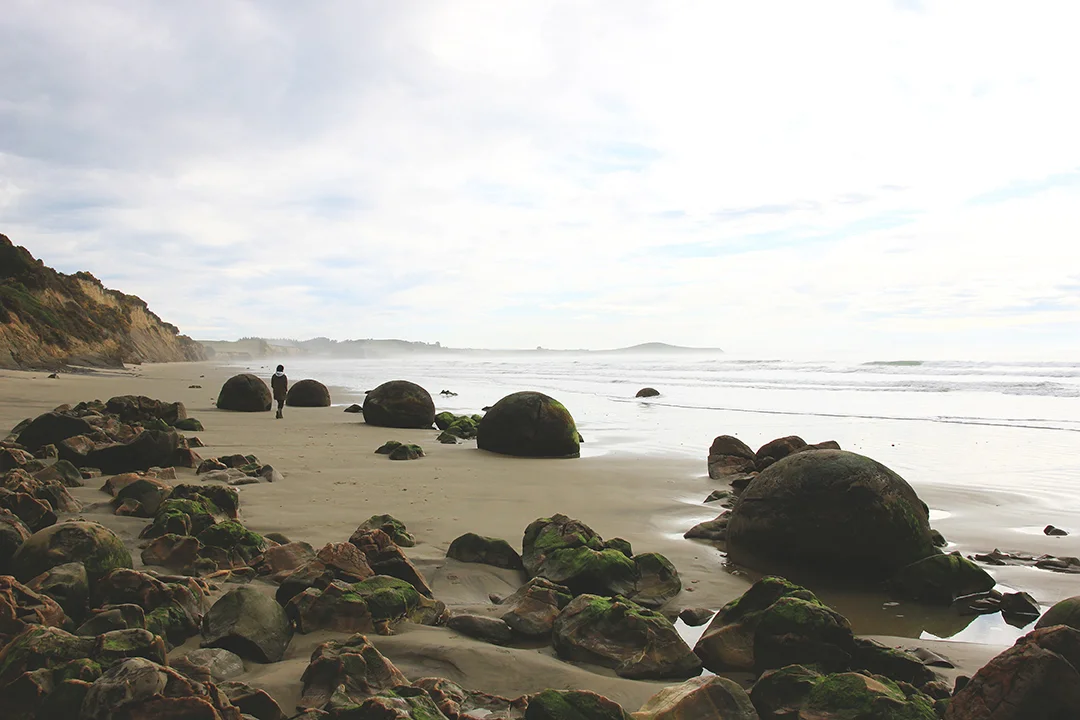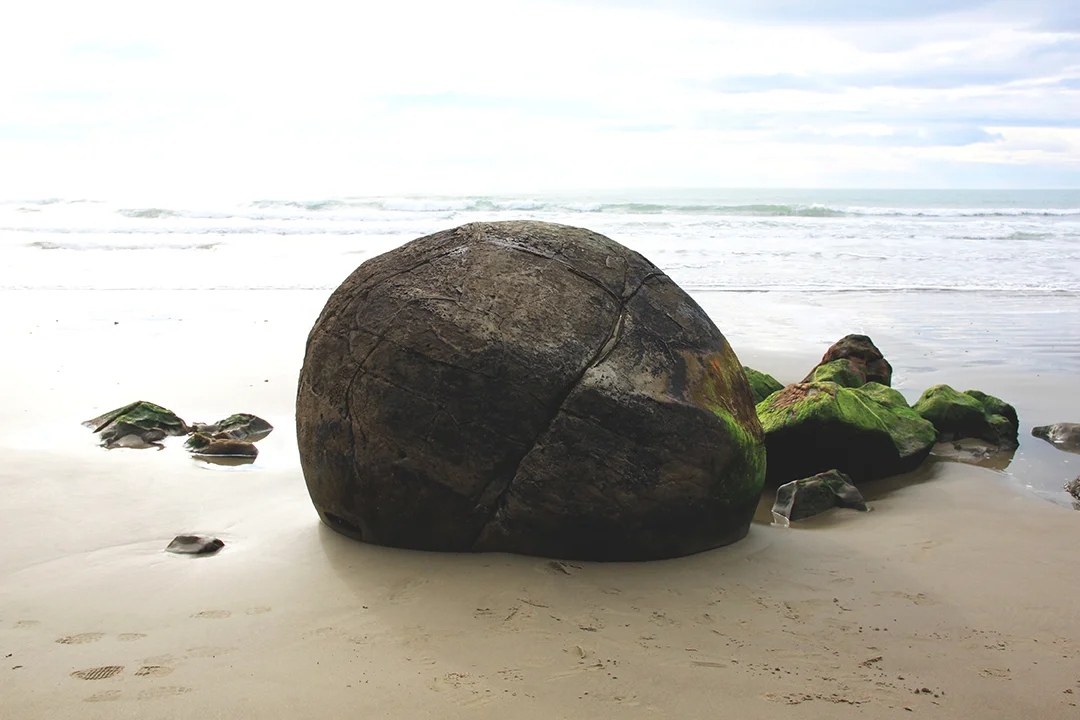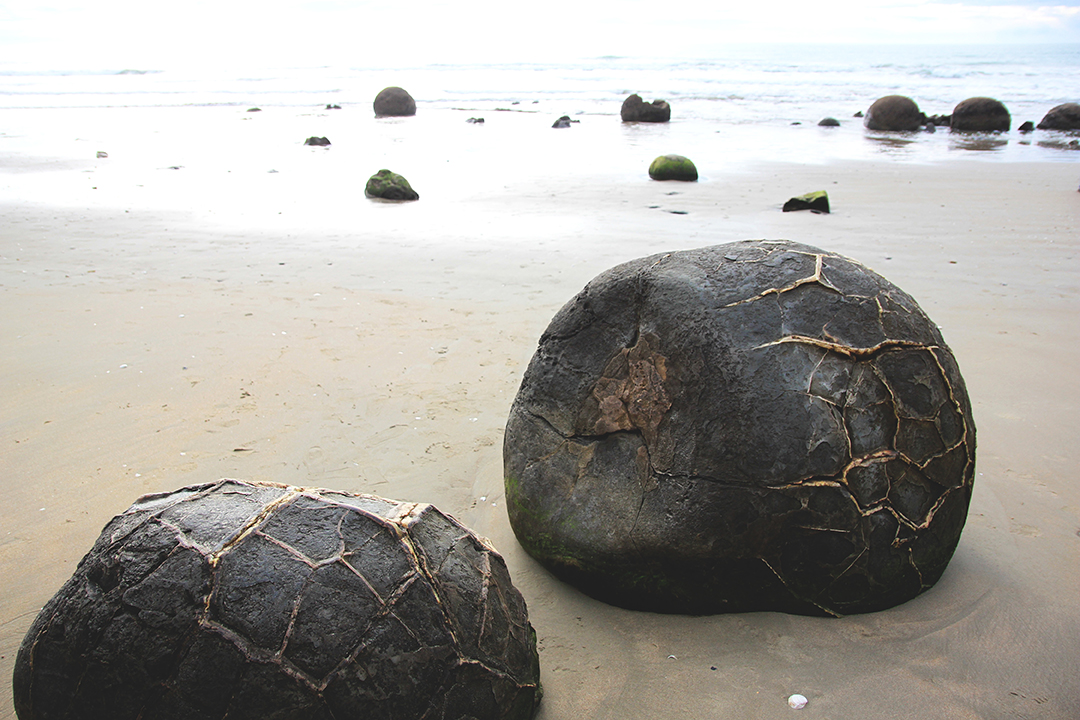Moeraki Boulders, South Island, New Zealand
September 2015
The Moeraki Boulders are another one of nature's anomalies that exist, tucked away on this island south of the equator. They lie scattered about, some lonesome, most in each other's company, along Koekohe Beach about an hour north of Dunedin on the east coast of the south island of New Zealand. They are almost perfectly spherical rocks resting partly in the sand, mostly exposed to the sea air, and every so often greeted by rising tides coming to say hello. They vary in size, anywhere from about two feet to seven in diameter, most leaning to the larger end rather than the smaller.
The oddest part about them though has to be the cracking that forms on some, which, after a bit of research, seems to be a sign of old age more than anything else. The cracks are technically called septaria and form from the inside of the stone outwards. Depending on just how old these boulders are, their wrinkles are filled with either brown calcite or yellow calcite, and in rare cases, dolomite and quartz. Frankly, I'm not sure which makes up the bit I saw, but it looks like slowly seeping gold, taking the pattern of a tortoise shell on what is clearly a dinosaur egg.
They almost look alive. Perhaps it's because you can see different boulders at different stages of deterioration. Those broken open (aka hatched) lie looking slain as they wait for the ocean to reclaim them. Others lie whole, spherical, somehow taunting the white water with their perfection as it begins to surround them. Original reports are described with many more boulders than there now. As you walk along the beach such a fact doesn't surprise you as, like ruins of a city, fragmented rock lie scattered about, rising just barely above the wet sand, acquiring green blankets of moss as consolation.
Apparently these boulders were formed millions of years prior while still submerged under water and mud. Buried but now above water, the slow erosion of the land's end exposes these lost treasures like the rough falling away from a diamond. According to Maori legends they are actually the remains of a large canoe shipwreck just off the coast—it's petrified hull washed up on shore. Not too far from science's own justification. For me, I'll stay with the dinosaur egg theory.
Yellow calcite, septaria, pressure hardened mud, petrified booty, whatever it may be, it all leads to a somewhat surreal experience of a prehistoric playground as you jump from one rock to another and try to sit on a third. It's regrettably commercialized with a gift shop and cafe marking the most advertised entrance. But once on the beach you sit back and take in a small wonder where no explanation, scientific or mythological, is really needed and you let that moment, shared with water, sand, and rock take you by the hand.






